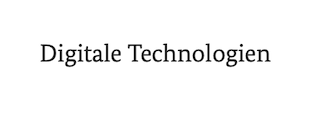SAAT
Sustainable Agriculture through Artificial Intelligence and Digital Technologies

Large quantities of chemical pesticides and fertilisers are used for the intensive cultivation of arable land. This poses considerable risks and burdens for the environment and consumers alike: The production of fertilisers and pesticides is a CO2-intensive process. Additional negative effects result from the disruption in biomass development and the reduction in biodiversity – leading to further species extinction. Last but not least, this form of soil cultivation jeopardises the quality of (ground) water. These interventions in the field ecosystem make our planet more susceptible to climate change and the associated extreme weather events.
Bearing all this in mind, the SAAT project is committed to its vision of sustainable, efficient and climate-resilient agricultural production. The approach: strengthening mixed crop cultivation. This has been widely implemented and proven in horticulture for generations but has not yet been widely used in agriculture for economic reasons. Due to various biological, biochemical and physical effects, mixed crops have a positive impact on yield and reduce the need for pesticides and fertilisers. Biodiversity and species diversity are also increasing – which positively affects ecosystem stability.
The SAAT project team is developing solution components that are decisive for broad application and is measuring the potential of growing root crops as mixed crops. An AI-based field planning tool will be developed for this purpose: With the help of a specially developed database, a map will be created for individual plants, thus enabling optimum field utilisation. There is also an autonomous harvesting system: a robotic sorting module that uses artificial intelligence to identify different types of fruit and prepare them for downstream process steps. The module will initially be trialled on selected root crops and will then be used in other machines and on additional crops. Small, autonomous and mobile machines that cooperate in a swarm, adapted to the size of the respective farm, are conceivable.
The ability to transfer the project results into practical applications was considered from the outset: The goal is to make the field planning tool available to farms as a software application so that they can operate in a more ecologically sustainable way in the future. The project team also wants to inspire other producers to close further technological gaps in the area of mixed crop cultivation. This could even give agricultural machinery manufacturers an indirect technological advantage in global competition.
Consortium:
- Schmiede.one GmbH & Co. KG
- FIR e. V., RWTH Aachen
- Seed Forward GmbH
- Recommend this page:
- Print view
